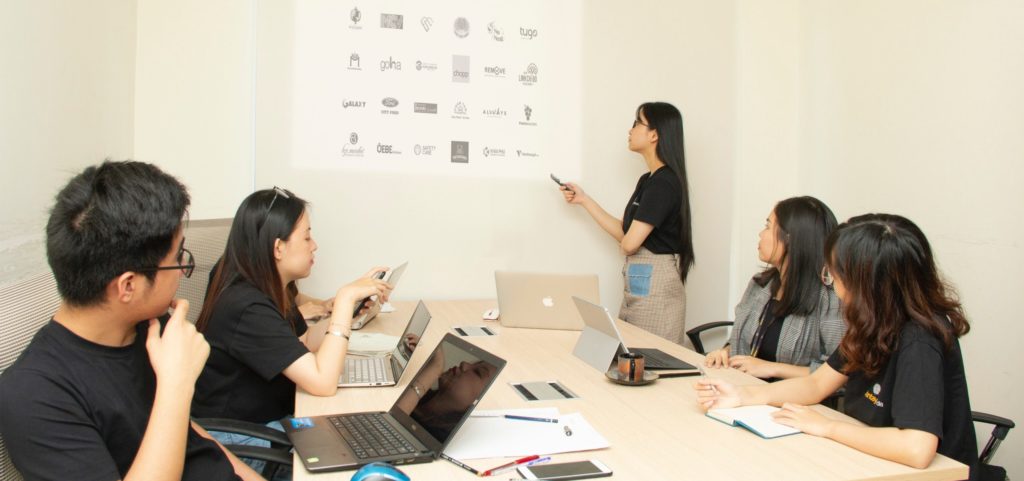Over the past few years, the way we think about work and learning has changed. Changing attitudes have made in-person work and learning less critical and online alternatives significantly more widespread.
While digital learning is powerful and convenient, in-person education still has invaluable benefits. Some skills and knowledge points are still best learned through a hands-on approach.
That’s why today’s higher education institutions need to combine the best of both worlds by adopting the hybrid learning model. Keep reading to learn more about this innovative educational method and how it can power up your organisation’s experiential learning delivery.
What is a hybrid learning approach?
Hybrid learning is an educational approach that combines in-person and virtual learning. For learners, it offers hands-on experience coupled with the convenience and accessibility of online courses.
The key element of hybrid learning is flexibility. Students have the power to balance online and in-person education to suit their needs and lifestyle—a feature that’s especially beneficial for a modern day student juggling multiple commitments, those who work full-time, or distance learners. Some learners also benefit significantly from simply working at their own pace.
In a hybrid learning environment, students can engage with class content in numerous ways. For example, they could attend in-person lectures on their days off from work and review digitised recordings on workdays.
Among other benefits, hybrid learning offers freedom of choice for students. It also allows for more efficient resource use and smoother communication for educators and educational institutions.
What is the difference between hybrid and blended learning?
The key differentiator between blended and hybrid learning is the relationship between in-person and online experiences.
In a blended learning environment, online learning complements in-person classes. Additional resources like videos, articles, and podcasts enhance in-person lessons and create an enriched learning experience.
On the other hand, online learning is an alternative to in-person classes in a hybrid learning environment. Material is shared asynchronously as part of an overarching lesson plan, and students are free to choose how they interact with the lesson. In this way, hybrid learning creates a powerful and flexible learning experience.
Why hybrid learning is the future for higher education students
Now, let’s discuss why hybrid learning is critical for building a positive future for higher education students and enhancing employability.
Flexible learning
The traditional university model isn’t ideal for all learners. Some students cannot attend every class because of work schedules, children, or other life commitments.
As such, flexibility in learning is crucial for universities hoping to provide a more open and accessible service for students.
Hybrid learning makes education flexible because students can study in a way that suits them without choosing between online and in-person learning. Students can reap the immense benefits of hands-on and experiential learning without compromising their time.
Efficient resource use
One of the biggest benefits of hybrid learning is that it allows for more efficient use of teaching resources.
Traditionally, educational institutions would need to offer multiple class streams and schedules to cater to student needs. Today, however, students who cannot meet specific schedules can keep up with coursework in the digital space.
Digitisation also reduces the need for expensive physical teaching materials like textbooks, saving money for students, educators, and institutions.
Independent academic exploration
Traditionally, learning is a process guided largely by teachers. However, with the introduction of the internet and digital tools, students have become increasingly reliant on their own research.
Hybrid learning takes a balanced approach to this problem by allowing students more independence while providing as-needed guidance. Students can explore topics in their own time, build confidence, and access help and support from educators and peers.
Time management
As we touched on above, hybrid courses are particularly beneficial for students who work full-time or have otherwise busy lives. Among other advantages, they won’t need to commute to campus each day and can follow their own study schedule, be it early mornings, late nights, or weekend work.
The hybrid learning process also allows online and in-person students on different time schedules to connect and communicate in a way they wouldn’t be able to with traditional education.
Affordability
Hybrid learning makes higher education more accessible to low-income families or students who cannot afford the high tuition fees of traditional classrooms. There’s also a lower need to invest in expensive supplies like textbooks, workbooks, equipment, and stationery.
How hybrid learning unlocks experiential learning opportunities
Hybrid learning is also a fantastic way to unlock experiential learning opportunities for students, especially now that we’re moving towards hybrid workplace arrangements.
Here are some key ways hybrid education drives high-quality experiential learning.
Diverse learning experiences
While the hybrid educational model has been around for decades, it’s only recently gained traction in the higher education industry. We can say the same for experiential learning.
Why?
Because today’s students demand more varied and engaging learning experiences.
This demand stems from our increasingly technology-driven society and hybrid work culture, where employees must seamlessly slip from digital to in-person work and communication at any time.
In a hybrid learning environment, students can engage with class content in various ways. There’s really no limit! Attending lectures, taking online quizzes, and participating in interactive activities boost student engagement and create more agile learners.
By combining lecture-based, experiential, and online education, students can explore limitless options and discover the type of learning unique to their needs.
Accessible learning resources
As education leans towards a hybrid nature, students will learn from various resources, not just books and lectures.
We mentioned above that textbooks and other educational materials can be expensive for students, so being able to access these texts digitally is a huge bonus. In the same way, students without reliable internet access at home can continue to learn in a traditional classroom environment—it’s all about what suits the student best.
Experiential education can continue from the classroom into the digital space, too. One example is using virtual reality to explore new environments and historical events. Another example is an interactive science or maths simulation, where students can experiment with different variables and outcomes in a realistic way.
Supportive and collaborative learning environment
Educators strongly encourage students to collaborate with classmates, discuss, and share ideas in an experiential learning environment. These communications can happen in a classroom, in out-of-class meetings, or via online chat and video call tools.
The hybrid model allows students to continue working as a group even if they live far from each other or follow different schedules. It also allows students to touch base with educators without disrupting their project’s flow.
As hybrid learning combines online educational materials like quizzes, live chats, and digital meetings with in-person discussions, learners, stay motivated, remain engaged, and won’t fall behind their peers if their schedules differ.
Focus on real-world experience
In traditional classroom learning, students take notes in lectures and tutorials, enjoying limited opportunities for hands-on experience.
In contrast, experiential learning is about making lessons come alive and allowing students to explore their interests through meaningful, relevant activities.
While ‘hands-on’ experiences are not possible with hybrid learning, digital activities can still have meaningful and genuine impacts. The hybrid learning experience is also strongly applicable to how work is done in the real world.
For example, a project could begin with an in-person group session where students meet and share initial ideas. From there, students can conduct additional research, browse online resources, and use multimedia to create presentations and reports. Students can also collaborate, critique, and evaluate each other’s work through digital tools and forums.
Building a hybrid experiential learning environment
If you’re ready to create a hybrid experiential learning environment in your classroom or institution, here are some tips and ideas to help you get started.
1. Include social and collaborative experiences in the classroom, such as group work and project-based learning. Extend these experiences into the online space through digital meetings and collaborative chat tools.
2. Use on-campus resources to supplement classroom learning, such as the science lab or art gallery.
3. Integrate technology into the classroom through interactive whiteboards or laptops with internet access for students to use at their desks.
4. Offer virtual, digital, and in-person experiential learning activities. For example, students could meet in person to devise a business plan and continue to work on the plan through online meetings.
The most important thing is to create an environment where students are involved and engaged. They should be able to see, feel, touch, or interact with the materials as they learn—even sensory experiences in virtual learning spaces are beneficial.
In hybrid experiential learning spaces, students can work on a project in person, virtually, or by supplementing in-person work with online research and investigation.
Why hybrid learning is here to stay
According to a 2021 ‘Future of School’ report published by AT&T, 94% of teachers believe hybrid learning—when the proper resources and supports are available—is here to stay. Among other benefits, the approach:
- Provides students with the opportunity to learn anytime, anywhere,
- Offers more flexible teaching arrangements for educators,
- Is more accessible and affordable than traditional education,
- Allows learners to move at their own pace,
- Facilitates group work and collaboration,
- Prepares graduates for the ever-growing hybrid workforce.
As we move toward more work-from-home and hybrid working opportunities, demand for hybrid learning experiences will soar. Delivering these experiences to students now will give them a head start in the versatile workplaces of the future.
How Practera can help
Practera makes delivering high-quality experiential and hybrid learning opportunities easier than ever. Using the platform’s range of innovative tools, you can plan, prepare, and launch projects from a single pane.
Some unique features you’ll benefit from include the in-built AI experiential learning assistant, ELSA, that provides real-time suggestions and evidence-based advice to improve your hybrid and experiential learning delivery.
The platform also features detailed progress and performance tracking, grading rubrics, and activity trackers to help you monitor student performance. Connecting in-person and online experiences is easier, too, with Practera’s mobile responsive progressive web app, Zoom integration, and chat-based collaboration tools. We also offer a project-based learning managed service to help you and your students gain real-world experiences with global organisations with projects best tailored to your needs.
To get started with streamlined hybrid and experiential learning, get in touch with the Practera team or download our comprehensive white paper today.




